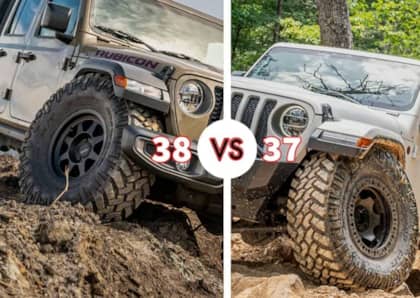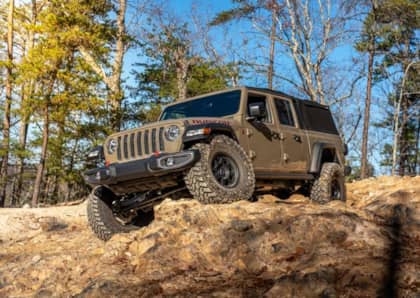Stubby VS Full Width Jeep Gladiator Winch Bumper
Some upgrades are simply born out of necessity. After adding a 3-inch suspension system and 38-inch-tall Nitto Trail Grapplers to our 2020 Jeep Gladiator Rubicon, we found ourselves with a slight issue. On the trail, our tires would contact the backside of the stock front bumper. Unlike the steel bumper group that is optional in the Rubicon, our JT came with the full width plastic one.
With such a low amount of lift relative to the massive tire, we knew we needed a bumper that would maximize our clearance. This would mean moving away from a full-width style front bumper in favor of a much narrower style, commonly referred to as a stubby. While there are a lot of great stubby front bumpers on the market, we ultimately decided on one that had some significant benefits over others: the EVO Manufacturing Quarter Pounder. In this article, we’ll break down why this bumper stands out from others and what else we did to increase the reliability of the Jeep.
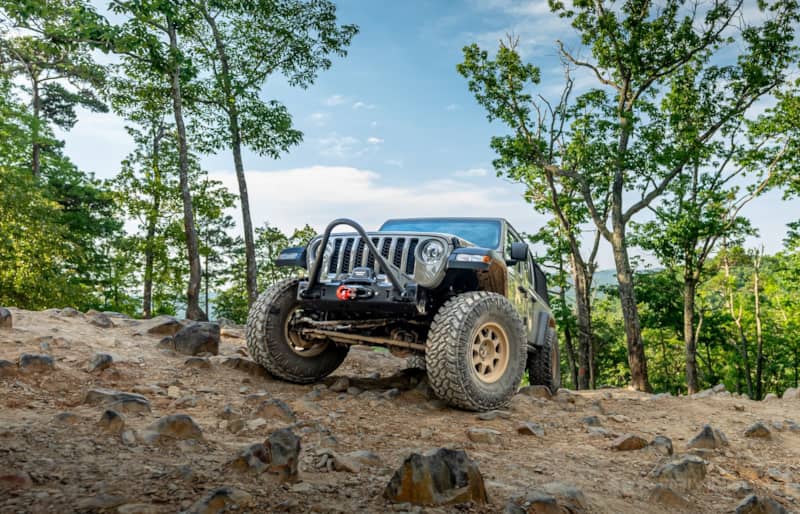
Full Width
Full width front bumpers do a great job of preventing your tire from being the first thing that contacts another vehicle on the road in the event you do get in an accident. The downside of a full width front bumper has to do with the how much approach angle it takes away by being in front of the tire. Our main issue had to with how much our 38x13.50R17 Nitto Trail Grapplers were rubbing on the backside of the bumper off-road.
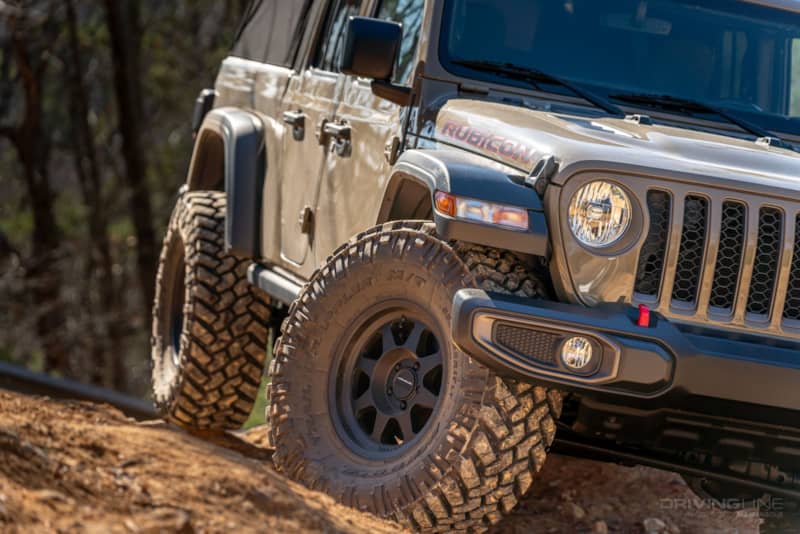
Sway Bar Upgrade
For Rubicon owners, going with the EVO Quarter Pounder will allow you to rotate your sway bar motor out of harm’s way. This optional step will require an M10 1.50x100 bolt, but we highly recommend it. This creates a cleaner look and adds clearance. Note, you will still see the motor assembly, so putting on a layer of black paint will clean up the appearance.
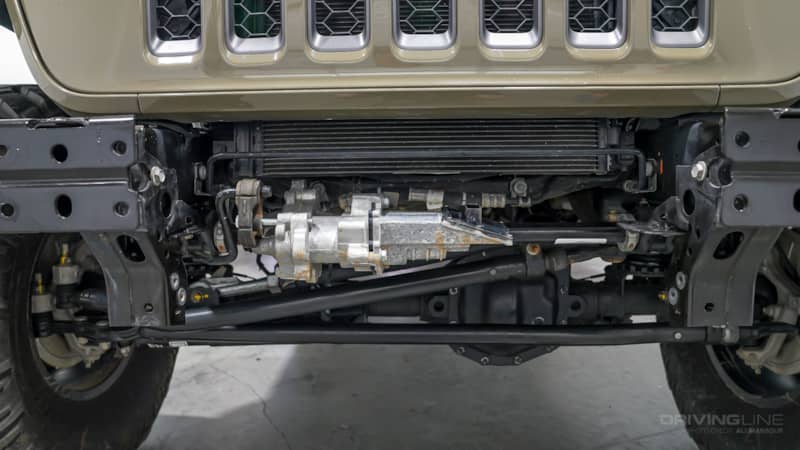
No Limits
While rotating the sway bar motor will protect one of the most common failure points on the JL and JT (the sway bar plug), we decided to take things a step further. What you see here is the No Limits sway bar actuator from EVO MFG. It allows you to manually engage and disengage the bar with the quick twist of the knob. This removes the chance of a plug failure (which will prevent you from using your lockers on the trail as well). It also means you no longer have a speed limit threshold for the sway bar. This will require a module to tell the computer you no longer have a sway bar. We used a Tazer JL Mini from ZAutomotive.
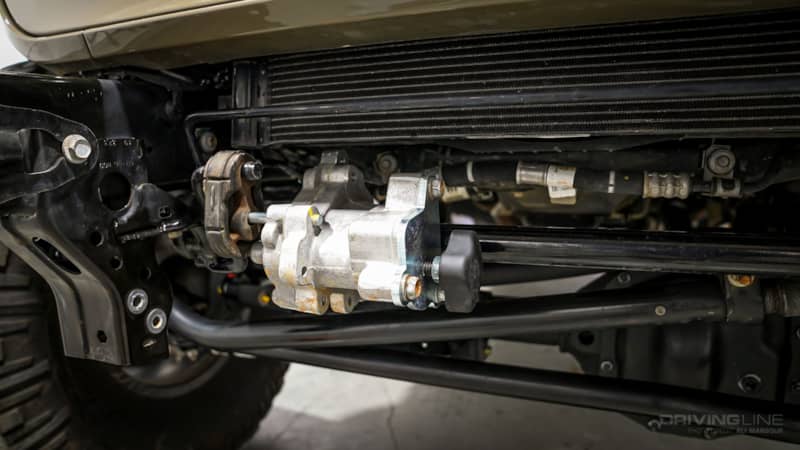
Chop Chop
Three inches of lift isn’t much, so we needed to do whatever we could to increase the ground clearance. To install the EVO MFG front bumper, you’ll need to cut off the lower portion of the frame horns at the front of the Jeep. These were simply home to the stock skidplate mounts and by removing them, you gain two inches of additional ground clearance. We used a Sawzall and grinder to complete the task.
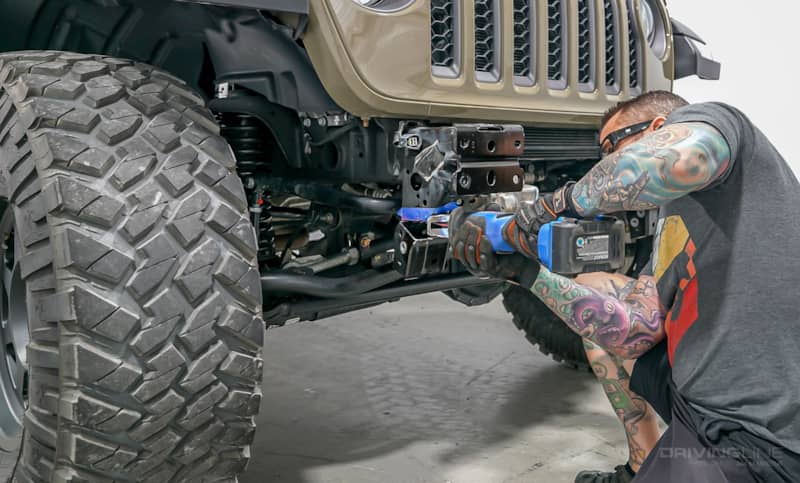
Winch Element
The most important recovery tool you can have on the trail is a winch. Given this is a winch front bumper, we wanted to equip it with a quality winch. We opted for this SOLO 9.5RS from Come Up. Its line speed and AMP draw specs were better than many of the other brands on the market, and it came with many of the features we were looking for (wireless controller, synthetic rope, and automatic brake). Hopefully, we don’t have to use it for ourselves anytime soon, but we are grateful to have it when and if the time comes.
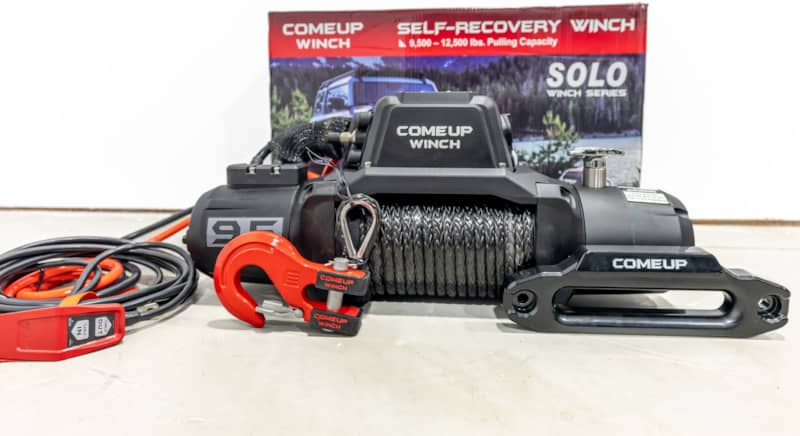
Stinger
You can option the Quarter Pounder bumper in a few ways (bare steel, aluminum, with a stinger, etc.). We wanted the added stinger mostly for looks and opted for the black powder coat finish direct from EVO. Another benefit of the bumper is that it places the winch low between the framerails. We prefer this design as it doesn’t block the coolers and keeps the winch mostly hidden for a cleaner look.
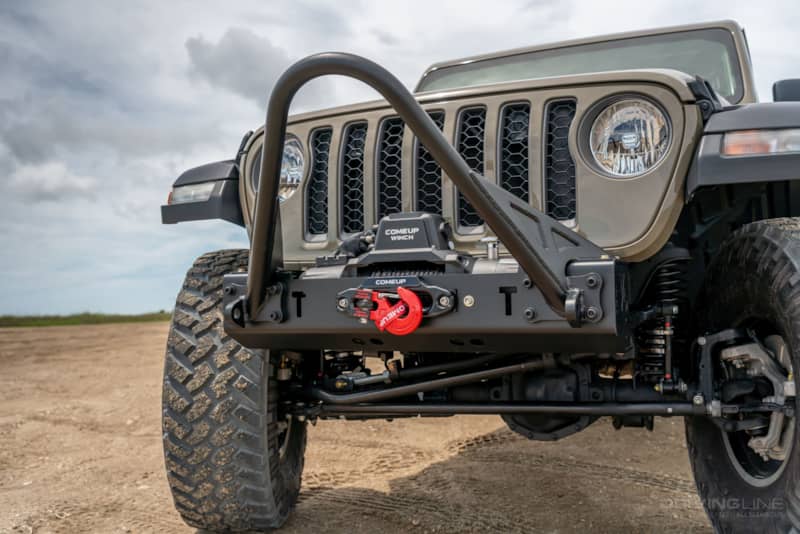
On The Trail
We were eager to put the new setup to the test on the trail and are happy to report no issues to date. Our 38-inch Trail Grapplers are no longer rubbing, and the added approach angle has been great off-road. While this setup did add a little weight to the front end, it’s not enough that we feel that we need to add any sort of lift spacer or upgrade the steering to compensate.
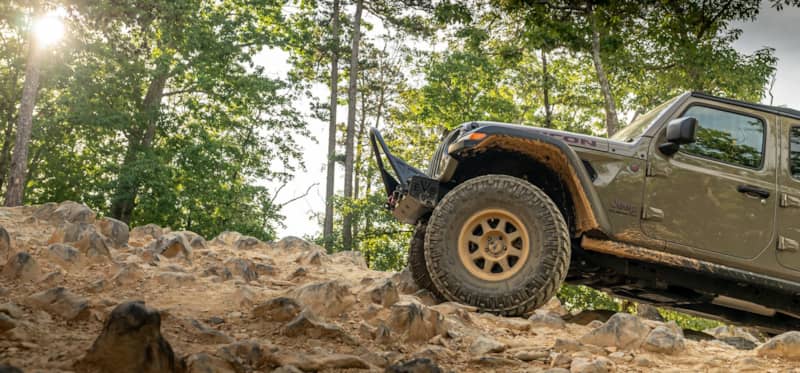
Travel With Us
Want to learn more and see our Jeep in action? Be sure to check out our full video review on our YouTube channel.
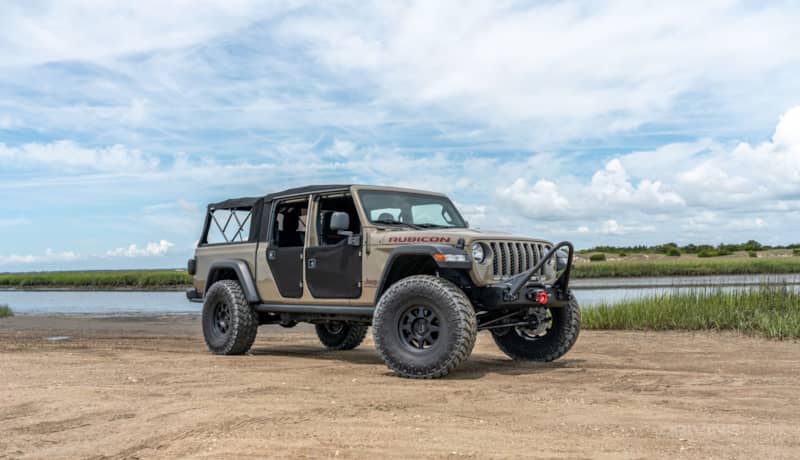
More From Driving Line
- Learn how 3 inches of lift and 38-inch-tall tires work on a Jeep Gladiator Rubicon.




